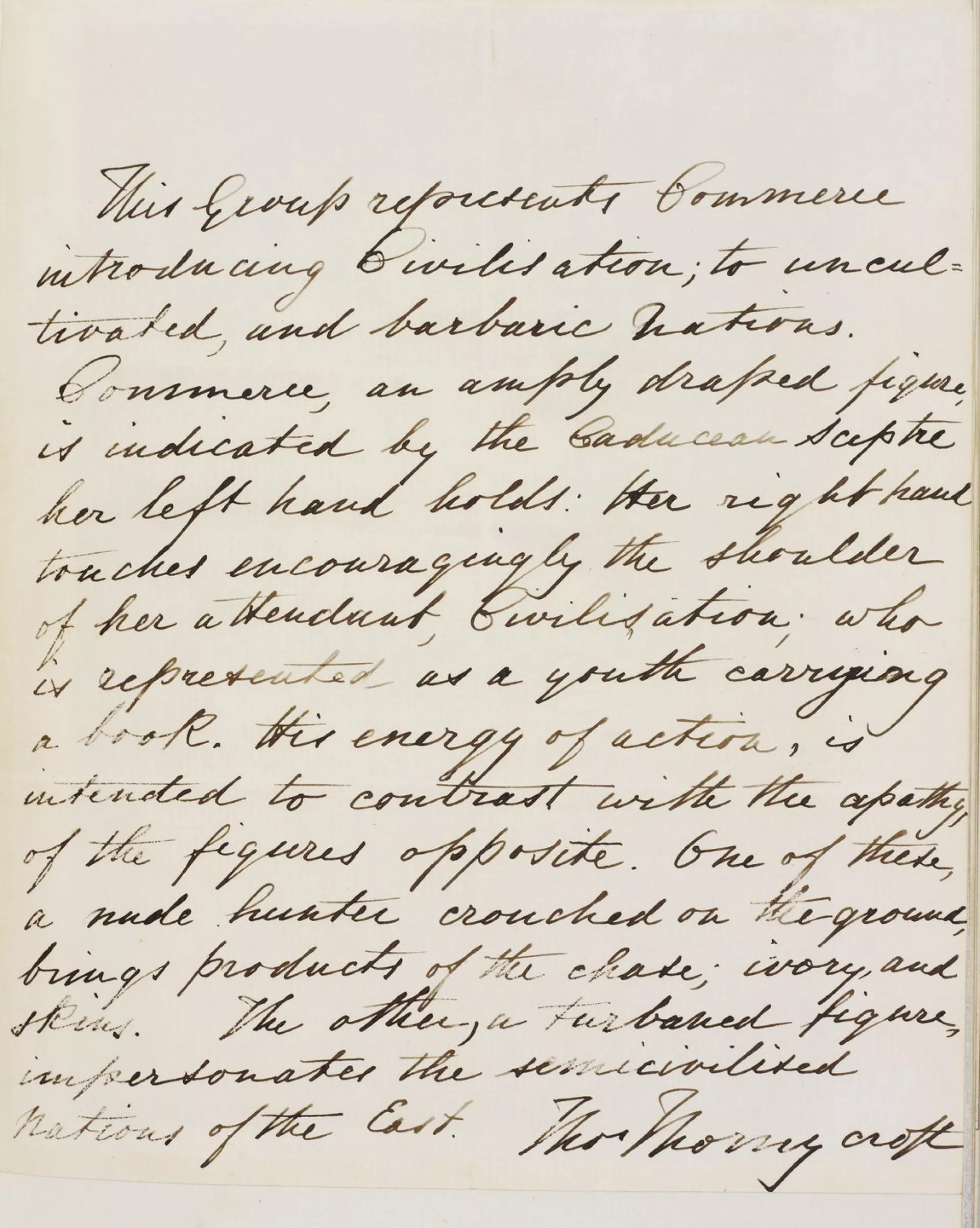VIC/ADDH2/925–6
c. 1864Memorandum by Thomas Thornycroft explaining his design for a sculpture representing ‘Commerce’ for the Albert Memorial, with a photograph of the model of the group
From the first development of ideas for a National Memorial to Prince Albert, sculpture formed a part of the design; and while the idea of the ultimate appearance of the Memorial changed from an obelisk to a figure of the Prince Consort, the inclusion of groups of statuary did not alter.
In March 1864, Lieutenant-General Charles Grey (formerly Prince Albert’s Private Secretary and acting as such for Queen Victoria) wrote to Sir Charles Eastlake (President of the Royal Academy, Director of the National Gallery and Secretary of the Queen’s Advisory Committee for the Memorial) with the names of the sculptors the Queen had chosen for the Memorial’s statues.
Thomas Thornycroft (1815–85) was among the six possible sculptors suggested for the four smaller statuary groups representing the ‘Industrial Arts’, and the Queen was apparently anxious that he should be chosen, partly because he was poor but also (perhaps more significantly) because the late Prince had had a high opinion of his abilities. Ultimately he, William Calder Marshall (1813–94), Henry Weekes (1807–77) and John Lawlor (c.1820–1901) produced the groups depicting ‘Commerce’, ‘Agriculture’, ‘Manufactures’ and ‘Engineering’ respectively. All of those chosen for the sculpture groups had been involved in the programme of sculpture commissioned for the Palace of Westminster.
In the final terms given to all the sculptors in May 1864, they were invited to create a design in a small clay model, from which, if approved by the Queen, they were to execute a full-size or working model.
These clay models were submitted in November 1864 and now survive only through the photographs that were taken of them; these images are therefore a crucial record of the development process for the Albert Memorial. The Queen was generally pleased with the results, although she required some alterations – only minor ones in the case of Thornycroft’s ‘Commerce’, the final sculpture on the Albert Memorial being almost identical to the model design.
There are, however, some variations in the group of figures, as explained by Thornycroft in his memorandum: the figure of Commerce now bears a cornucopia, representing wealth and abundance, rather than a sceptre; the youth has become a merchant (the figure is said to have been modelled on Thornycroft’s son, Hamo, who himself became a famous sculptor) standing beside a bale of cotton (indicative of the Victorian textile trade) and carrying a ledger and a purse: his Anglo-Saxon-style dress perhaps represents the long tradition of trading. The other two figures have transformed into an Eastern merchant, proffering a casket of jewels and symbolising trade in luxury goods, and a rustic opening a sack of corn and representing commerce in the necessities of life.
Thornycroft’s memorandum is nevertheless representative of the ideas and processes behind the creation of the Albert Memorial, which in many ways commemorates not only an individual but also the age in which it was created.








